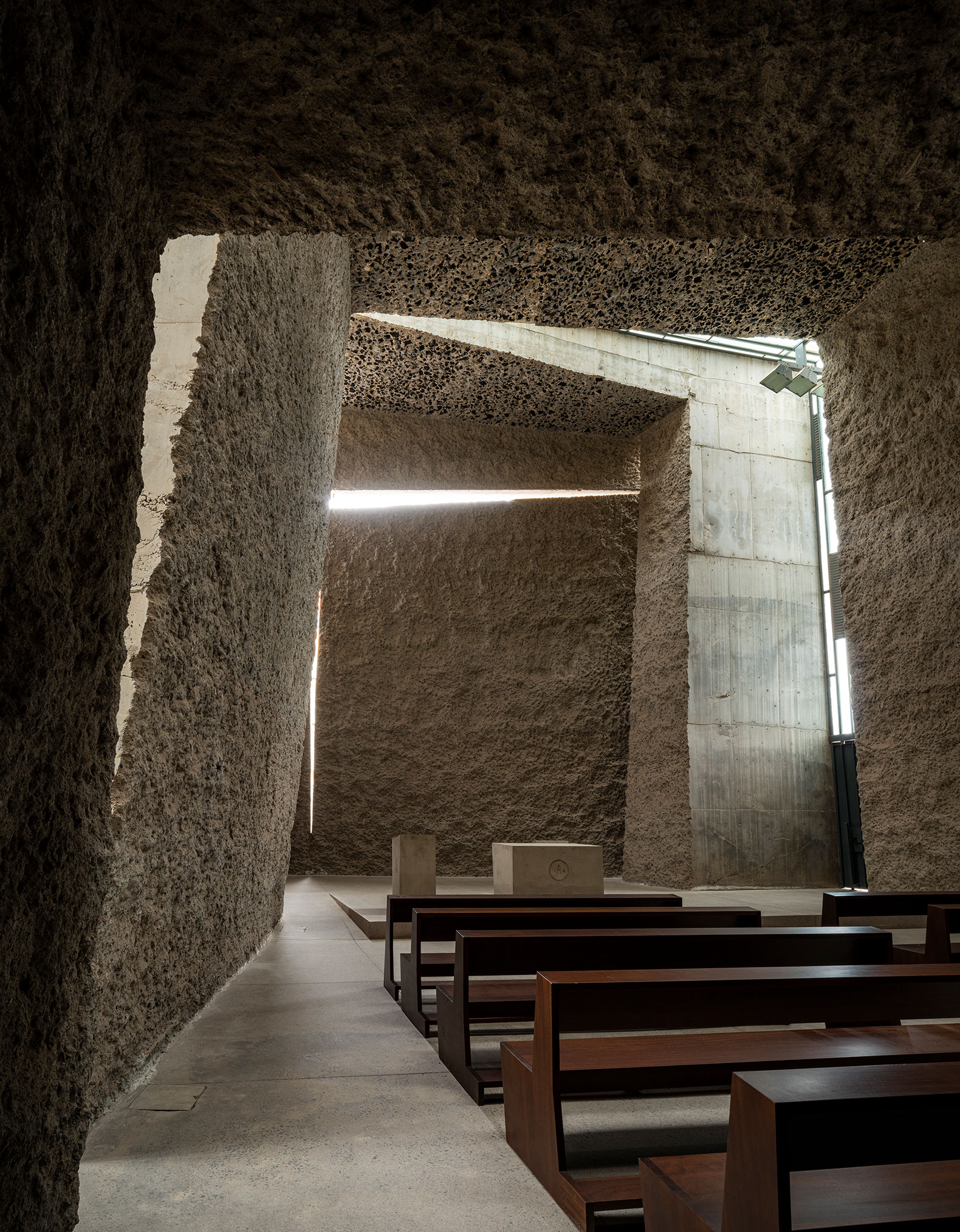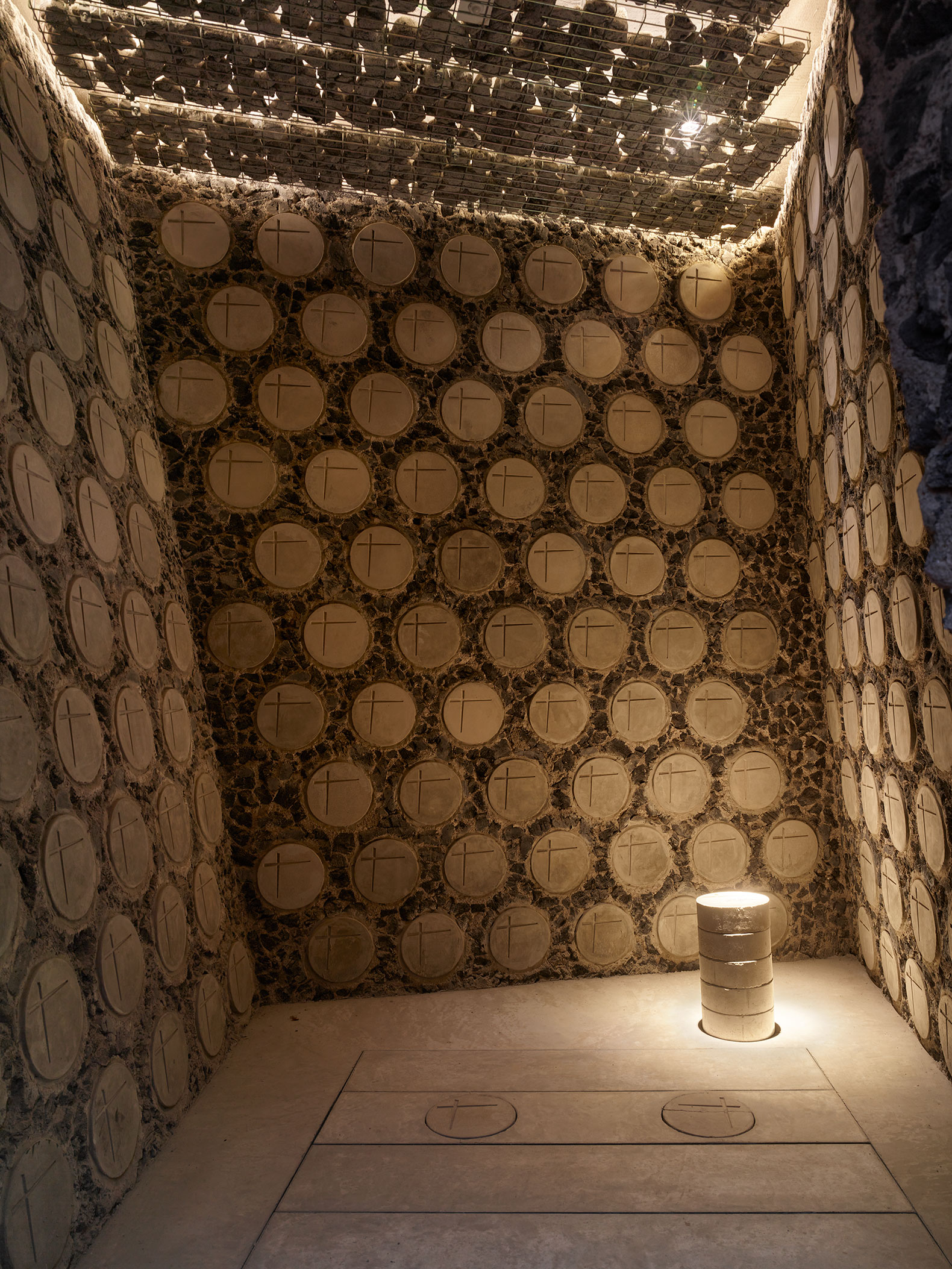The building carried out in different phases, has gradually been recognized with the International Prize for Religious Architecture, awarded in 2022 by the Association of Architects of the United States (AIA) and the Faith&Form association; the Concrete Innovation Award 2012, from the Ambuja Foundation of India; as well as its inclusion in the permanent collection of the Museum of Modern Art MoMA in New York.
The Frate Sole Foundation, created in 1995 by Father Costantino Ruggeri, promotes artistic values in spaces of Christian worship. In addition to the International Prize for Sacred Architecture, it organizes the European Prize for the best undergraduate project for a new church and is an international reference in research on contemporary churches. It also promotes the work of its founder, a multifaceted artist who designed more than 30 churches around the world.

Project description by Fernando Menis
An example of collective action
The construction of the Church of the Holy Redeemer spread over fifteen years, has overlapped with the transformation process of the Las Chumberas neighbourhood, a polygon of 670 homes from the '70s, organized in 42 blocks to Later they added shopping centres and industrial warehouses. Supported at all times by the Bishopric of Tenerife, promoter of the project, as well as by the sponsors and neighbours, Menis proposed the Church as a necessary catalyst for the urban and social changes that were taking place in the neighbourhood. In his vision, the new building had to create a place where there was none and contribute to the redefinition of Las Chumberas' identity, becoming a reference space in a previously confusing urban fabric. The resulting building is a Church that includes a parish centre and a public plaza surrounded by vegetation, that is, a public meeting place that the neighbourhood needed.
It is also an example of collective action since the financing of the works has been carried out through donations from various organizations, many neighbours and some businessmen committed to the neighbourhood where they were born and grew up. The uneven pace of remittances is in fact what has determined the construction logic of the project and its subsequent execution: a complex made up of four independent modules plus their environment, which has been delivered in phases. The parish centre, housed in two of the four volumes of the complex, was completed in 2008 and has been in use since then while waiting to raise the necessary funds for the rest of the work.

Holy Redeemer Church by Fernando Menis. Photograph by Hisao Suzuki.
Low-tech innovation with concrete and stone
The building, inspired by the geology of the volcanic island that hosts it, appears embedded in the ground, rising with its four solid volumes that make you think of enormous shifting rocks. The rough texture of exposed concrete contrasts strongly with the conventional residential environment. It is as if a geological phenomenon had occurred on the periphery as if nature was fighting against banality. Narrow fractures open between the stone volumes and are protected with sculptural metal and glass structures. Natural light slides through them, creating an austere and stark complex, in which the architect has renounced everything superfluous.
Daylight filters through the cracks to shape a free and introverted void that plays an essential role in the mass by emphasizing each of the Christian sacraments. At dawn, a cascade of light crosses the cross, filling the space behind the altar to stage the entrance to the cave in which Jesus was buried and radiating towards the baptismal font, the first light of a Christian. At noon, the altar, confirmation and communion are bathed in vertically flowing light. Later, a beam of light falls on the confessional. The strategic arrangement of the skylights achieves the same effect on anointing, marriage and the priesthood.

Holy Redeemer Church by Fernando Menis. Photograph by Roland Halbe.
The use of concrete as the main material covers several aspects: exterior, interior, structure, shape, material and texture. First of all, it is a commonly used material, accessible locally, which allows working only with local companies and materials, by the principles of "kilometre zero architecture" that Menis claims in his projects. Secondly, the energy efficiency provided by concrete due to its isotropic nature is reinforced here by the thermal inertia of the thick solid walls.
Finally, as in other of his buildings - the CKK Jordanki Culture, Music and Congress Center (2015, Poland), or Magma Arte & Congresos (2007, Tenerife) - Menis experiments here with the acoustic potential of concrete, and demystifies the belief common according to which concrete is acoustically inferior to other materials such as wood. From the point of view of acoustics, concrete was used here in two ways: for sound diffusion, conventional exposed concrete was used, while for absorption the surface of exposed concrete previously mixed with light porous volcanic stone (picón) was used. ). In this way, acoustics have been achieved that resemble those usual in opera, suitable for speech and singing, ideally designed for a building that combines ecclesiastical and social functions.















































































